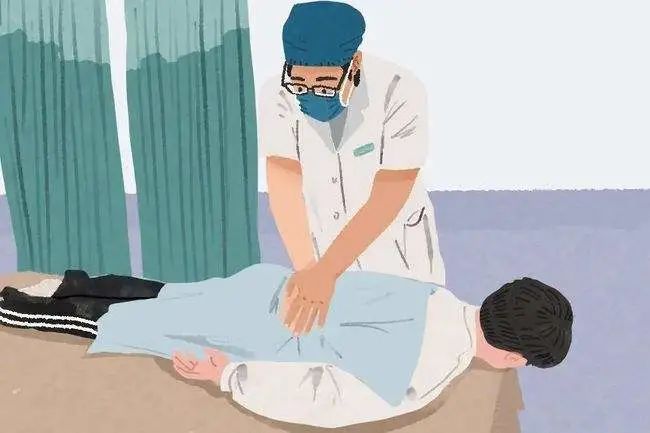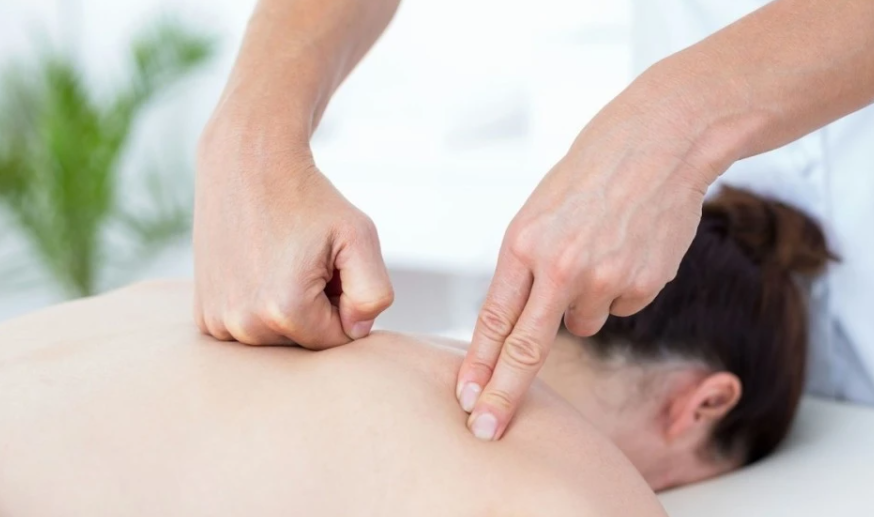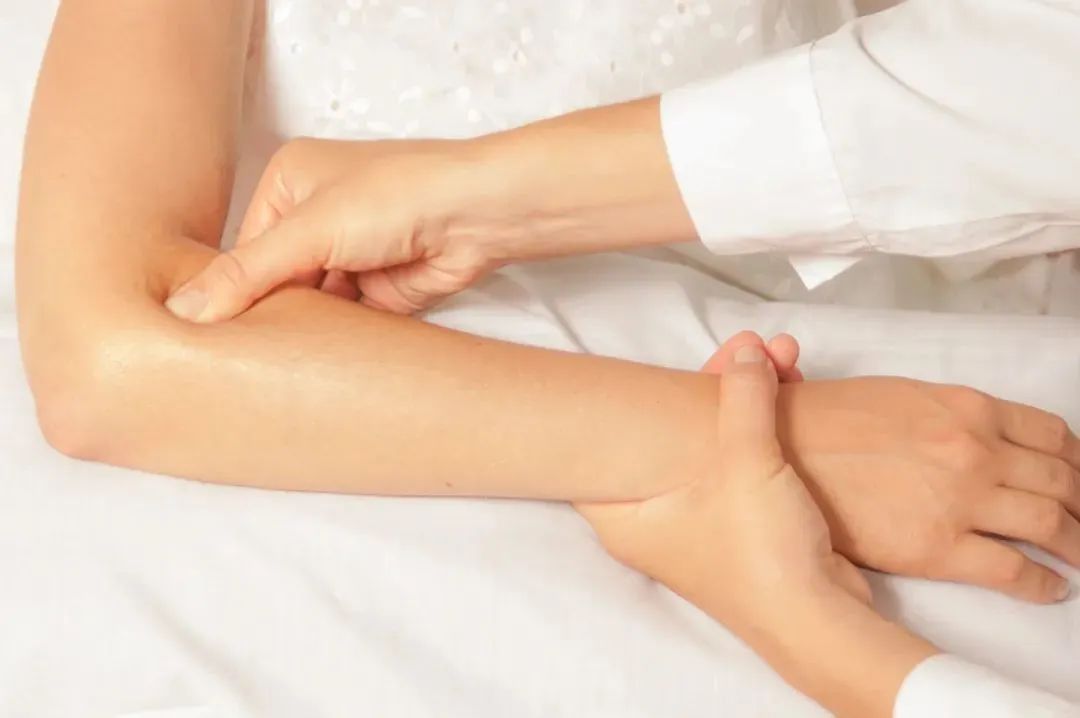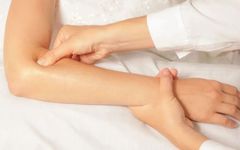
 Tui Na (推拿) is a method that applies specific techniques or physical activities on the body’s meridians (经络) and acupoints (腧穴) to promote health and treat diseases. It serves to unblock meridians, lubricate joints, facilitate the flow of Qi (气) and blood (血), adjust organ functions, and enhance the body’s resistance to diseases. Tui Na is widely used in various clinical specialties for multiple conditions.
Tui Na (推拿) is a method that applies specific techniques or physical activities on the body’s meridians (经络) and acupoints (腧穴) to promote health and treat diseases. It serves to unblock meridians, lubricate joints, facilitate the flow of Qi (气) and blood (血), adjust organ functions, and enhance the body’s resistance to diseases. Tui Na is widely used in various clinical specialties for multiple conditions.


What is TCM Tui Na?
TCM Tui Na is based on the theories of TCM organ (脏腑) and meridian (经络) systems, combined with Western anatomical and pathological diagnostics. It uses manual techniques on specific areas of the body to regulate physiological and pathological conditions, achieving therapeutic goals. Essentially, it is a form of physical therapy.
In terms of massage therapy, it can be divided into health maintenance massage, sports massage, and medical massage. Historically, Tui Na was referred to as An Mo (按摩) and An Qiao (按乔), and is an ancient Chinese health preservation technique.

What is Tui Na Therapy?
Tui Na, also known as massage, is one of the oldest external therapies. Tui Na therapy is guided by its theoretical framework, integrating modern medical theories, and applies Tui Na techniques to specific body parts and acupoints to prevent and treat diseases.
1. The earliest Tui Na text is the “Huangdi Qibo Massage Classic”.2. The combination of Tui Na techniques with medicinal wine first appeared in the “Suwen: Blood and Qi Formation”.3. During the Sui and Tang dynasties:a. Organized teaching began, and massage doctors and practitioners emerged.b. The term “Gao Mo” (膏摩) appeared.4. In the Song, Jin, and Yuan dynasties:a. Emphasis was placed on the analysis and selection of techniques.b. Instruments were used for massage.5. In the Ming dynasty:a. Clinical practitioners of techniques emerged.b. The term “Tui Na” began to appear in Wan Quan’s “Pediatric Expansion”.c. The application of techniques expanded from adults to children.d. Pediatric Tui Na developed and evolved.6. In the Qing dynasty:In the “Yizong Jinjian”, the conclusion of bone-setting techniques and the introduction of the “misalignment theory” and spinal techniques were presented.1. Common Techniques:Tui Na techniques are standardized skillful movements performed by the practitioner using their hands or other body parts to stimulate treatment areas and mobilize the patient’s limbs. Due to variations in stimulation methods, intensity, duration, and limb movement techniques, numerous distinct basic techniques have been developed. These can be combined into complex techniques (e.g., An Rou Fa (按揉法), Tui Mo Fa (推摩法)), or consist of a series of movements with specific operational routines (or procedures). Tui Na therapy primarily relies on manual techniques, and its academic schools have distinct characteristics based on lineage and clinical experience. Consequently, there are over a hundred different Tui Na techniques. Some can be applied independently with specific indications, while others have evolved into standardized complex Tui Na therapies. Some techniques can be mastered with training, while others require a solid foundation in internal skills (e.g., Neigong Tui Na) and clinical experience. The commonly used basic Tui Na techniques can be categorized into six major types: pressing, swinging, rubbing, pinching, tapping, and joint mobilization.2. Tui Na Therapy:
Tui Na has effects such as soothing meridians, promoting Qi and blood circulation, adjusting organ functions, lubricating joints, and enhancing the body’s resistance to diseases. Due to these effects, Tui Na is particularly effective in treating common diseases of the musculoskeletal and nervous systems.
In daily life, many people seek Tui Na for acute lumbar sprains, stiff necks, or cervical spondylosis. However, Tui Na is not only effective for these conditions but also for other diseases. For instance, a man suffering from chronic insomnia, who relied on medication to sleep, found improvement after several Tui Na treatments, allowing him to sleep peacefully without medication. Similarly, an elderly woman with chronic superficial gastritis, who had not improved despite various treatments, experienced symptom relief after proper Tui Na therapy combined with other rehabilitation measures.
Tui Na has shown emerging therapeutic advantages in clinical studies for fatigue relief, anti-aging, weight loss, treatment of menopausal syndrome, and skin beauty. It is believed that the simple, convenient, easy, and inexpensive Tui Na therapy, with no side effects, will be increasingly accepted and utilized by more people.
Techniques include: Tui (推), Na (拿), An (按), Mo (摩), Gun (滚), Rou (揉), and Qia (掐).
3. Precautions:
1. Tui Na should not be performed 30 minutes after meals, on an empty stomach, or after excessive fatigue.
2. Cooperation from the patient is essential, and the practitioner’s attention should be on the patient’s reactions and local conditions. Techniques should be adjusted according to the patient’s condition, and intensity should be appropriately controlled to prevent abrasions. Passive techniques should be gentle.
3. The indoor air should be well-ventilated, and the temperature should be comfortable, especially in winter when warmth should be maintained.
Pediatric Tui Na
Wu Shiji pointed out that “the principles of external treatment are the same as those of internal treatment”. The treatment principles of pediatric Tui Na are fundamentally similar to those of internal treatment, adhering to the disease mechanism to treat the root cause, adjust Yin and Yang, and support the righteous Qi while expelling pathogenic factors. Under the guidance of TCM foundational theories, it is widely applied to treat pediatric conditions such as diarrhea, vomiting, food accumulation, anorexia, constipation, abdominal pain, prolapse, colds, coughs, asthma, fever, enuresis, night crying, muscular torticollis, stiff neck, and convulsions, with good results.
1. Commonly Used Mediums:
The Tui Na medium refers to various lubricants applied to the skin at acupoints during Tui Na. These mediums can enhance the combined therapeutic effects of Tui Na and medicinal substances, achieving treatment goals while protecting the skin and allowing for smoother techniques. Generally, for superficial conditions, exterior-releasing herbs such as scallion juice, ginger juice, and mint juice are preferred; for blood stasis, blood-activating herbs like safflower chicken oil are suitable; and for heat conditions, cooling herbs such as mint juice, pig bile, and light bamboo leaf infusion are used.
2. Common Tui Na Techniques:
Due to the delicate skin and weak constitution of children, special attention must be paid to the techniques used in pediatric Tui Na, emphasizing gentleness and penetration, requiring quick, soft, and steady movements.
The basic operational techniques include: pushing, rubbing, pressing, massaging, pinching, rolling, grasping, moving, kneading, wiping, pounding, twisting, scraping, shaking, and patting. In addition to basic techniques, practitioners have gradually summarized specific operational methods with fixed procedures and names over hundreds of years of clinical practice. These methods often involve applying one technique to one or several acupoints, now referred to as “complex operational methods”, such as “Wasp Enters the Hole”, “Horse Crossing the River”, and “Water into Soil”.
3. Operational Sequence and Supplementing/Reducing Principles:
During Tui Na, operations should be performed in sequence to avoid omissions. Start with light techniques such as pushing, rubbing, and moving, followed by heavier techniques like pinching, kneading, and grasping; begin with the head and face, then the upper limbs, followed by the lower limbs, and finally the chest, abdomen, and back.
The acupoints used in pediatric Tui Na can be categorized based on the operational techniques into linear, rotational, and vertical directions, determining the supplementing or reducing principles based on the operational direction.
4. Contraindications:
Pediatric Tui Na has a wide range of applications and good effects, but there are situations where it is not suitable, such as:
(1) Skin burns, scalds, abrasions, lacerations, or scabies in the area should not be treated with Tui Na.
(2) Patients with certain acute infectious diseases, such as cellulitis, bone tuberculosis, osteomyelitis, and erysipelas, should not undergo Tui Na.
(3) Patients with malignant tumors, trauma, fractures, or dislocations should not receive Tui Na.
(4) Patients with certain acute infectious diseases, such as acute hepatitis and pulmonary tuberculosis, should not undergo Tui Na.
(5) Patients with severe heart disease, liver disease, or mental illness should be cautious with Tui Na.
The pathological characteristics of pediatric diseases make children susceptible to illness and rapid disease progression. Improper or untimely treatment can affect the prognosis, so Tui Na therapy should be performed by qualified practitioners and, if necessary, combined with internal treatment.
5. Misconceptions about Pediatric Tui Na:
Many irresponsible institutions claim that pediatric Tui Na is simple, with no barriers to learning, and can be done by following acupoint diagrams in books. However, if you believe you can perform Tui Na on your baby, would you still trust that Tui Na can treat diseases? It is important to understand that Tui Na is not as simple as casually pushing, pressing, or patting. One must be familiar with the body’s meridians and acupoints and be able to differentiate symptoms to perform targeted Tui Na. This is not something that can be learned casually by an ordinary person.
Pediatric Tui Na stimulates acupoints to adjust meridian Qi and blood, balance Yin and Yang, enhance immunity, alleviate discomfort, and improve various bodily functions. It is a medical practice based on the holistic view of TCM and is not the miraculous cure-all as some may claim. Parents should approach it rationally and not blindly follow trends.

Is heavier Tui Na better?
Some believe that Tui Na must be performed with strong techniques to be effective, thinking that “comfort does not treat disease, and treating disease is uncomfortable”. This perspective is somewhat one-sided. The “Yizong Jinjian: Essentials of Bone-setting” states: “The application of techniques should make the patient unaware of discomfort, which is the hallmark of proper technique.” Ming dynasty physician Zhang Jiebin harshly criticized the misuse of forceful massage, stating: “Today, we see practitioners who do not understand the consequences, using strong techniques to bind patients, open joints, and deplete vital energy…” While strong techniques may provide immediate relief for some conditions, they can merely numb the area temporarily, leading to recurring pain later. Frequent use of heavy techniques can cause muscle fibrosis, making muscles increasingly stiff. Generally, the recipient should feel slight soreness that is bearable, without experiencing anxiety, dizziness, or nausea, which indicates the optimal intensity.
If the pressure is too light, it will not have a therapeutic effect; if too heavy, it may cause other injuries, such as damage to ligaments, muscles, and fascia. Additionally, if there are pre-existing conditions like heart disease or hypertension, excessive pressure may trigger these diseases. Many people, when feeling tight or sore, prefer family members to help massage. In such cases, the pressure should not be too strong; lighter pressure can help relax muscles and promote blood circulation. However, it is crucial to monitor the pressure. Excessive pressure can lead to adverse reactions such as fascia inflammation, dizziness, nausea, palpitations, and arrhythmias. If the pressure is too light, it may not affect the reflex zones. Even if the acupoints are not precisely located, light pressure can still provide relaxation and blood circulation benefits. However, excessive pressure can damage nerves in the lumbar and cervical regions, leading to numbness in the hands or feet. If the neck is injured, symptoms may include dizziness, nausea, blurred vision, shoulder discomfort, and even spinal cord issues leading to paralysis. Therefore, Tui Na techniques should be adjusted according to the patient’s specific condition to ensure effective treatment without causing harm.
Professional practitioners remind us that while massage can treat many diseases, including internal, external, gynecological, and pediatric conditions, there are situations where massage is not advisable. Patients with acute injuries, localized edema, inflammation, open injuries such as fractures, severe heart disease, hypertension, and renal failure should avoid massage.
Is it necessary to perform Tui Na every day?
1. Can Tui Na be performed daily?
Tui Na can be performed daily. Daily Tui Na can help raise the temperature of local tissues, promote capillary dilation, improve blood and lymph circulation, reduce blood viscosity, and lower peripheral vascular resistance, aiding in the prevention and treatment of cardiovascular diseases. However, moderation is key; blindly performing Tui Na every day for extended periods may not be beneficial. Appropriate massage can promote blood circulation, relax muscles, and relieve fatigue, undoubtedly benefiting the body. However, excessive daily massage can lead to adverse effects such as soreness, fatigue, and muscle atrophy. Occasional daily massage over a short period is generally acceptable.
2. Timing for Daily Tui Na:
When performing Tui Na daily, it is important to manage the timing; longer durations do not necessarily yield better results. Generally, it is advisable to perform Tui Na twice a day, morning and evening, for about 20 minutes each session. This approach achieves the health benefits of Tui Na while preventing skin damage from prolonged friction. Additionally, it is best not to apply pressure to the same area for extended periods; each area should be massaged for a maximum of 10 minutes. Excessive duration can lead to adverse effects, including the potential for introducing pathogens or causing massage fatigue.
3. Techniques for Daily Tui Na:
When performing Tui Na daily, techniques can be tailored to individual needs. To prevent skin damage during massage, lubricants can be used to reduce friction. Common options include talcum powder, sesame oil, massage oil, and massage lotion.
4. Best to Follow a Treatment Course:
Daily Tui Na is beneficial, and continuous treatment can enhance effects. However, prolonged reliance on Tui Na can lead to dependency, which is not conducive to health. Therefore, it is recommended to follow a treatment course of 10 to 15 days, followed by a 2-3 day break before starting the next course for optimal results. Frequent Tui Na can create dependency, leading individuals to rely on it for pain relief while neglecting active movement. For example, while Tui Na may help treat stroke, it does not eliminate the need for active rehabilitation post-stroke. Thus, life is about movement, which refers to active movement rather than passive treatment. Additionally, individuals with weak constitutions, severely deficient vital energy, or certain special conditions should avoid acupuncture and Tui Na.
5. Who Should Avoid Tui Na:
(1) Patients with severe skin diseases, burns, scalds, or skin lesions.
(2) Elderly individuals with extreme weakness who cannot tolerate even light techniques.
(3) Patients with fractures or suspected fractures.
(4) Patients with severe diseases such as heart disease, malignant tumors, or septicemia.
(5) Pregnant women and those menstruating should avoid abdominal, lumbar, and gluteal massages.
(6) Individuals with certain acute infectious diseases, mental illness, extreme fatigue, intoxication, or fever should avoid Tui Na.
(7) Patients with infectious diseases such as osteomyelitis, purulent arthritis, or brain abscess should avoid Tui Na.

Contraindications and Precautions for Tui Na Techniques
1. Contraindications for Techniques:
Acute infectious diseases, acute osteomyelitis, tuberculous arthritis, infectious skin diseases, eczema, burns, skin ulcers, tumors, and various sores. Additionally, women during menstruation, pregnant women over five months, patients with acute peritonitis, acute purulent peritonitis, and acute appendicitis should avoid Tui Na. Patients who are excessively weak due to prolonged illness or have severe cardiovascular diseases or are elderly should also avoid massage.
Contraindications for Tui Na therapy refer to situations where Tui Na is inappropriate or may worsen the condition.
(1) Patients with undiagnosed acute spinal injuries or those with spinal symptoms should avoid Tui Na until spinal fractures are ruled out. If there are symptoms of cerebrospinal issues, subarachnoid hemorrhage must be excluded, which is also a contraindication for Tui Na.
(2) Patients with fractures, bone tuberculosis, osteomyelitis, bone tumors, or severe senile osteoporosis may experience pathological fractures, tumor metastasis, or exacerbation of inflammation due to Tui Na, thus also constituting a contraindication.
(3) Patients with severe heart, lung, liver, or kidney failure, or those who are excessively weak, generally should not receive Tui Na due to their inability to withstand strong stimulation. Timely rescue measures should be taken.
(4) Various acute infectious diseases, acute peritonitis, including perforated gastric or duodenal ulcers, are contraindicated for Tui Na therapy. Surgical exploration should be considered.
(5) Patients with bleeding tendencies or blood disorders may experience localized subcutaneous bleeding from Tui Na, thus should avoid this treatment.
(6) Avoid applying techniques to areas with skin injuries. However, light techniques around pressure sores can improve local blood circulation, aiding in the gradual healing of ischemic necrotic wounds. This was an unexpected finding during the treatment of traumatic paraplegia patients in the 1970s.
(7) Pregnant women over three months should avoid abdominal, gluteal, and lumbar techniques to prevent miscarriage.
(8) Patients with mental illness or those who are excessively tense should avoid Tui Na treatment.
2. Precautions for Techniques:
1. Ensure the patient is positioned correctly, whether sitting, prone, supine, lateral, or standing, and instruct them to relax while positioning them according to the technique being applied (e.g., for lateral lumbar techniques, the patient should lie relaxed on their side with the upper leg flexed at the hip and knee).
2. The practitioner should choose a suitable position, gait, and posture to facilitate force application and sustained operation while avoiding personal strain.
3. Initial and subsequent treatments may cause skin pain and bruising. Skin pain, known as epidermal pain, often occurs during initial contact with Tui Na due to the patient’s adaptation to the technique. Patients may report pain in the treated area, which can also arise from excessive force. Reducing pressure can resolve this. Bruising indicates subcutaneous hemorrhage, which may occur for three reasons:
(1) Excessive force causing subcutaneous bleeding, leading to significant superficial pain; if the technique is too forceful, deeper tissues may also be affected.
(2) The patient may have low platelet counts or dysfunction, leading to bruising after stimulation (platelet tests may be necessary).
(3) This may be a natural response to treatment; for example, inflammation around the shoulder joint may exhibit this response.
If such situations arise, rest for 3-5 days before resuming treatment, but it is essential to identify the cause, particularly regarding the appropriateness of the technique used.
How to Determine Treatment Course Length
The treatment course refers to the duration of treatment required to achieve a certain level of improvement, after which a new treatment plan is determined. The length of the treatment course is based on clinical experience. Treatment is typically divided into segments for observation, and after one course, the treatment plan is adjusted based on the patient’s condition. Generally, improvement can be assessed based on subjective feelings (with some exceptions). For instance, a reduction in symptoms, decreased discomfort, and increased vitality are all signs of improvement. Patients should also adjust their mindset, maintaining a relaxed attitude and addressing psychological issues related to their condition.
How to Prevent Disease Occurrence
1. Regularly consume scallions, ginger, and garlic:
Incorporating scallions, ginger, and garlic into meals is one of the most effective methods for disease prevention. These ingredients have strong antibacterial properties and can enhance immunity when digested, preventing not only minor illnesses but also serious diseases like cancer.
2. Drink tea regularly:
Developing a habit of drinking tea is beneficial for health. As the saying goes, “tea can treat a hundred diseases,” and drinking tea can easily enhance the body’s resistance, effectively preventing various diseases, including cardiovascular issues. However, those prone to insomnia should limit their tea intake, especially in the evening.
3. Soak feet in hot water daily:
Soaking feet in hot water daily is an excellent preventive measure. The feet contain many important acupoints, and soaking them is akin to massaging these points, promoting blood circulation and relieving daily fatigue. Adding herbal ingredients to the water enhances the effect, ensuring good health.
4. Exercise in the morning:
Engaging in morning exercise significantly reduces the likelihood of illness. The morning air is the freshest of the day, so taking advantage of this time for running or exercising keeps one in optimal condition throughout the day.
5. Wash hands before meals:
Regardless of activities prior to eating, washing hands is essential. Hands are the most common contact point for bacteria, and failing to wash them can lead to illness. Using soap for handwashing is recommended for thorough and rapid removal of bacteria.
6. Spend time outdoors:
When free, it is advisable to spend time outdoors. Prolonged indoor confinement can lead to health issues. Regularly breathing fresh air from nature promotes physical and mental well-being.
7. Maintain an optimistic mindset:
To reduce illness, it is crucial to maintain a positive attitude. A good mindset contributes to physical health, and good health minimizes the risk of disease. Engaging in enjoyable activities, listening to uplifting music, watching great films, and spending time with loved ones can foster a positive outlook.
By paying attention to these details in daily life, we can effectively prevent various diseases!

The Qiaokou District Hanjiadun Street Community Health Service Center Rehabilitation Department serves as the promotion center for appropriate TCM techniques in Qiaokou District under the Hubei Chinese Medicine Association, relying on Professor Wang Hua’s team from the Hubei University of Chinese Medicine’s Acupuncture and Orthopedics College. The Rehabilitation Department has launched Tai Chi Tui Na, guided by the “Yin-Yang Theory”, targeting different patient conditions and pains, selecting corresponding acupoints according to seasonal changes, and combining traditional joint manipulation techniques with Tui Na rehabilitation techniques to support Yang Qi, warm meridians, and expel cold and dampness, making it an excellent method for health maintenance and expelling pathogenic factors!
Consultation Phone
83999068

